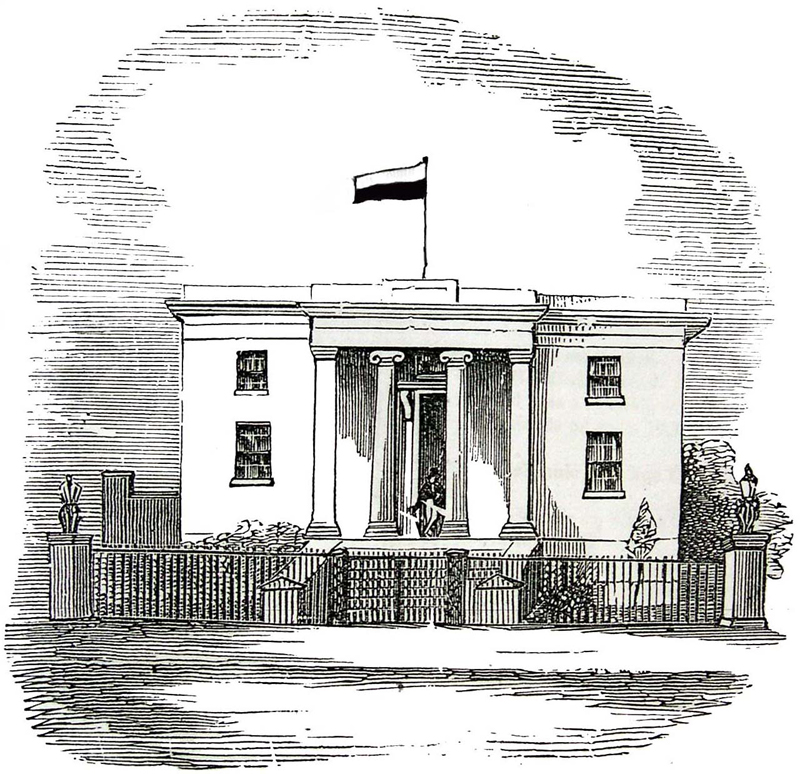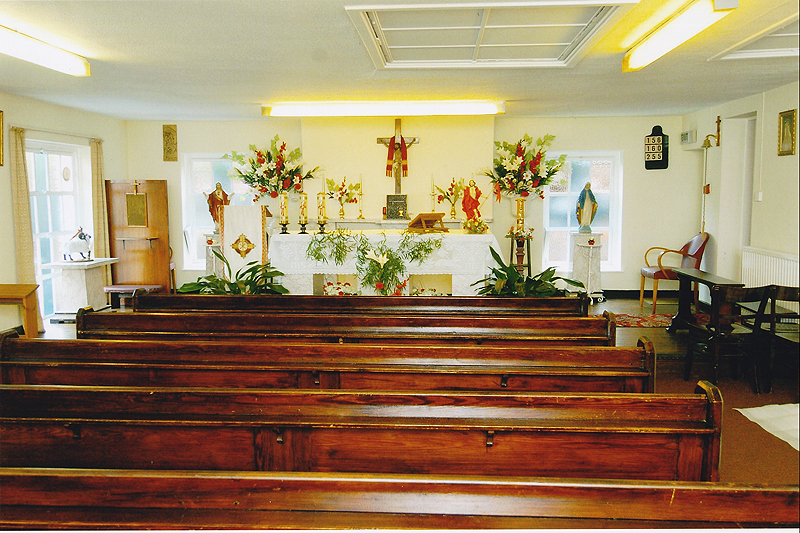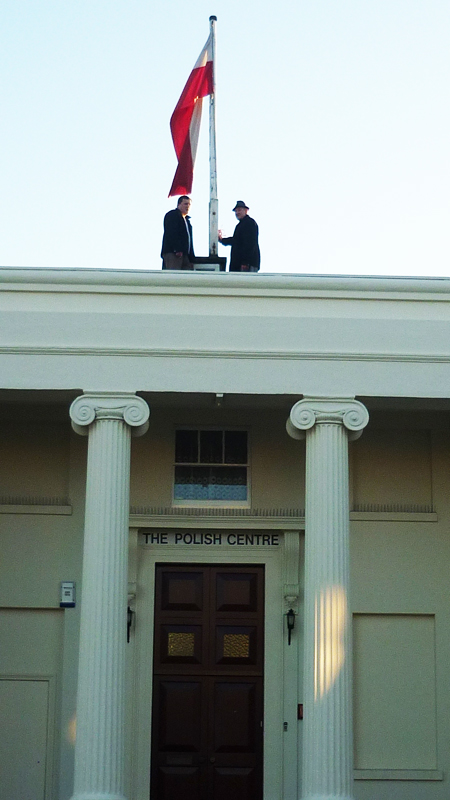The Polish Centre in Leamington Spa
 |
| Town Hall, Leamington Spa. Our building as it was in 1830 |
The building you see is the Polish Centre, which was originally Leamington Spa’s Town Hall, designed for the Town Commissioners in 1831 by the architect Russell, who also designed the now demolished Warneford Hospital.
The building, although small, housed the Commissioners’ meeting rooms and offices, a ballroom, a magistrates’ court, and a police station with holding cells.
The Commissioners intended to construct a much larger civic complex
around the Town Hall, and to beautify the area with “ornamental buildings”. The large building now occupied by the Christian Bookshop, and more particularly the extension to the former George Hotel on the corner of George Street,
which is clearly aligned on the same symmetrical axis, and is meant to improve views from the “Royal Balcony” of the Town Hall, point to this. After the present Town Hall opened on the Parade, the entire building was taken over
by the police, who eventually sold it to the Polish Catholic Mission in 1968.
The formation of the Polish community in UK was the result of population movements, brought about by World War II. The war itself started in Poland, with a co-ordinated attack by Nazi Germany and Soviet Russia. In eastern Poland,
the Soviets embarked on a policy of genocide and ethnic cleansing. Prisoners of War were massacred at Katyn Forest, and nearly 2 million civilians were deported. Within 18 months half the deportees were dead. The German invasion of the
Soviet Union in July 1941 resulted in the release of all survivors. 114,000 joined the Polish Armed Forces in the West, commanded by General Wladyslaw Anders. They then fought alongside the British in Italy. In the spring of 1946,
the British Foreign Secretary wrote to every member of the Polish Armed Forces, inviting them to settle in Britain. When Monsignor Jozef Golab arrived in Leamington Spa in September 1960, the Polish community numbered 250. To enable
the purchase of the Polish Centre in July 1968, the Monsignor loaned his own money, received as compensation for the years spent in Nazi concentration camps.
The post-war Polish community saw itself as an exiled political elite,
an attitude which for most, manifested itself at a personal level in a refusal to accept any form of citizenship or ID. Political activity in support of the Government in Exile, and the democratic opposition in Poland, became an important
part of their identity. Chief among them, was Prof Zbigniew Antoni Scholtz, chair of the Polish Centre for 20 years, who was also a minister in the Government in Exile.
 |
| Chapel |
 |
| Raising the flag on Polish Independence Day, 2009. |





